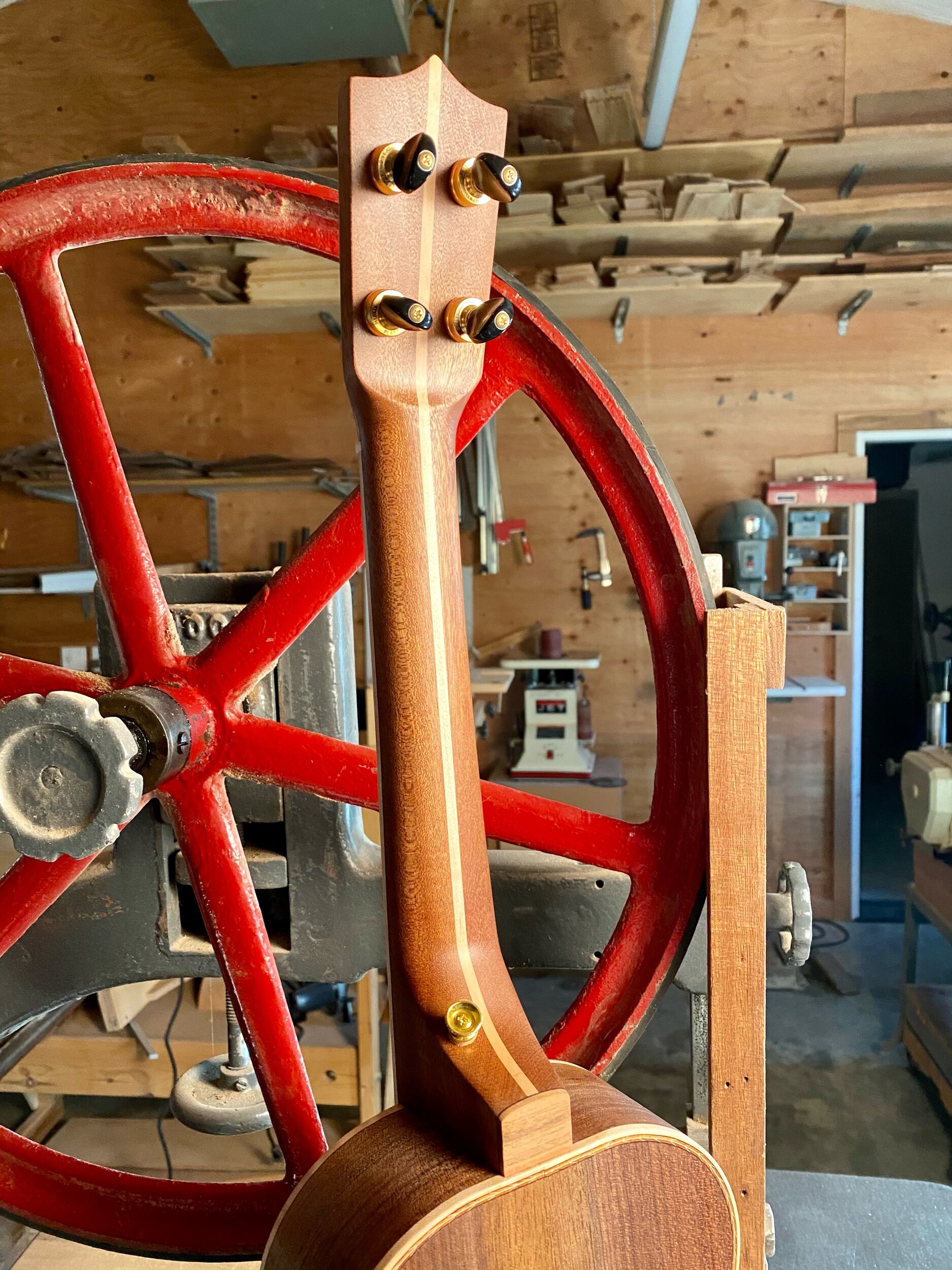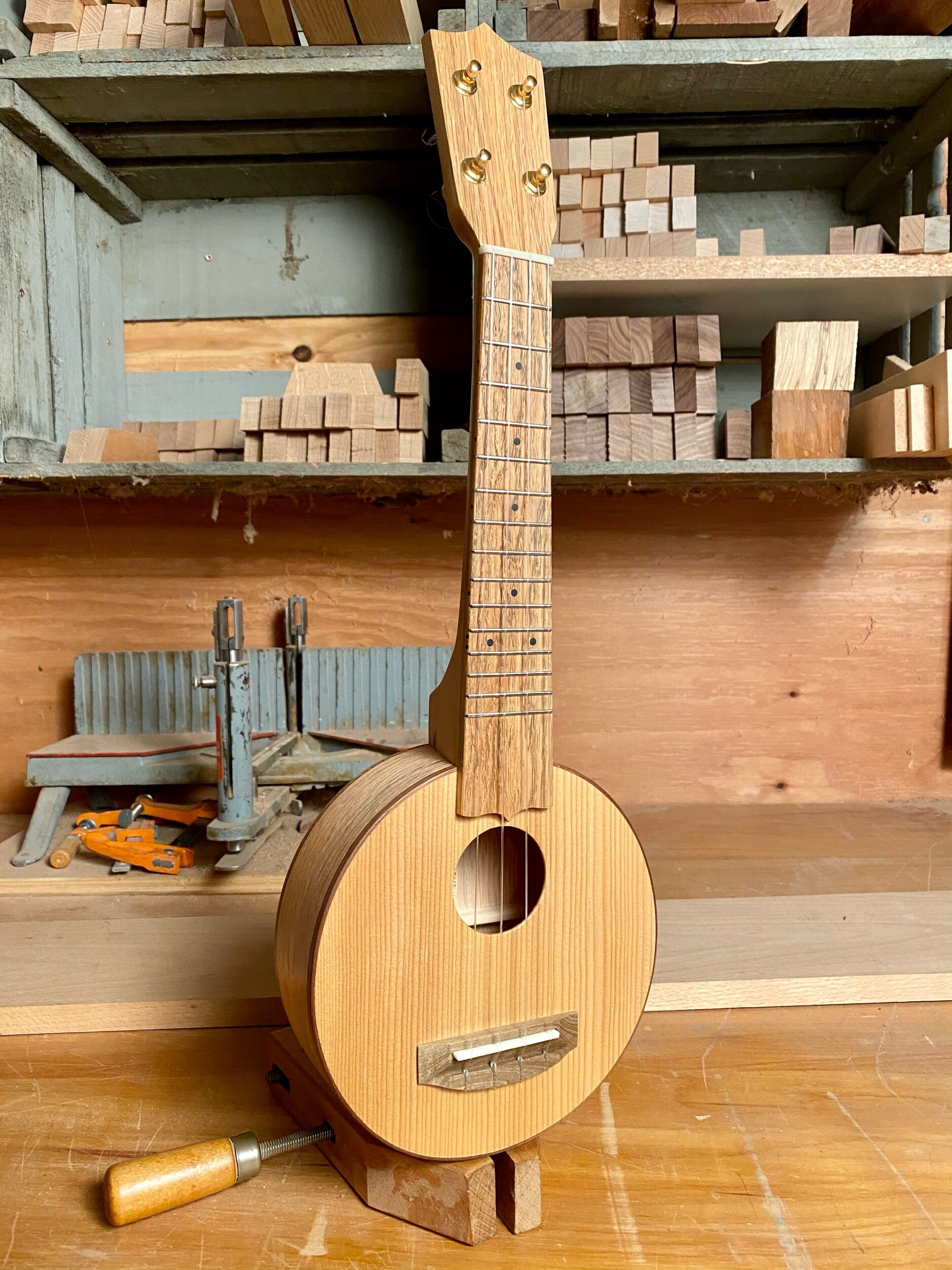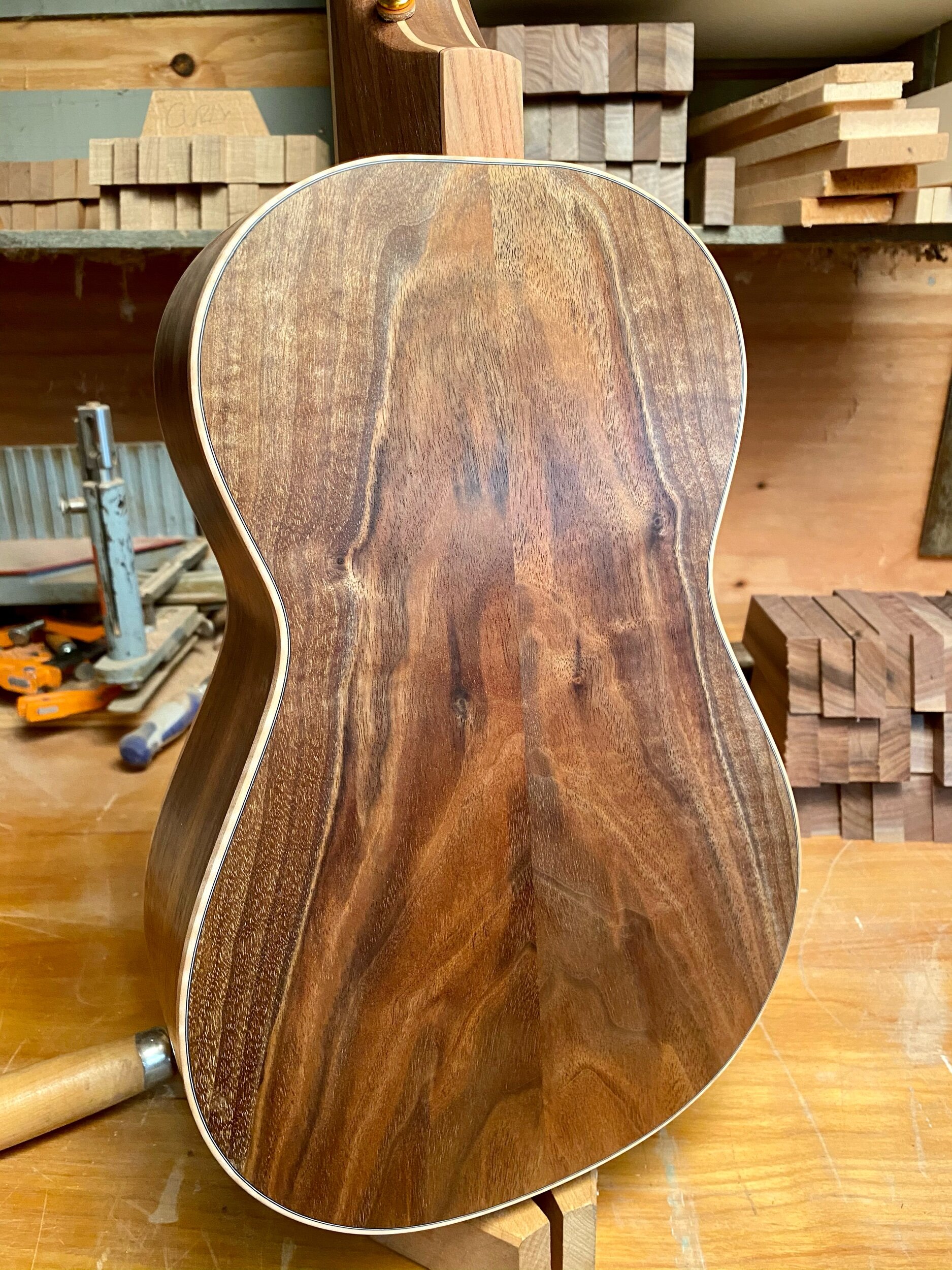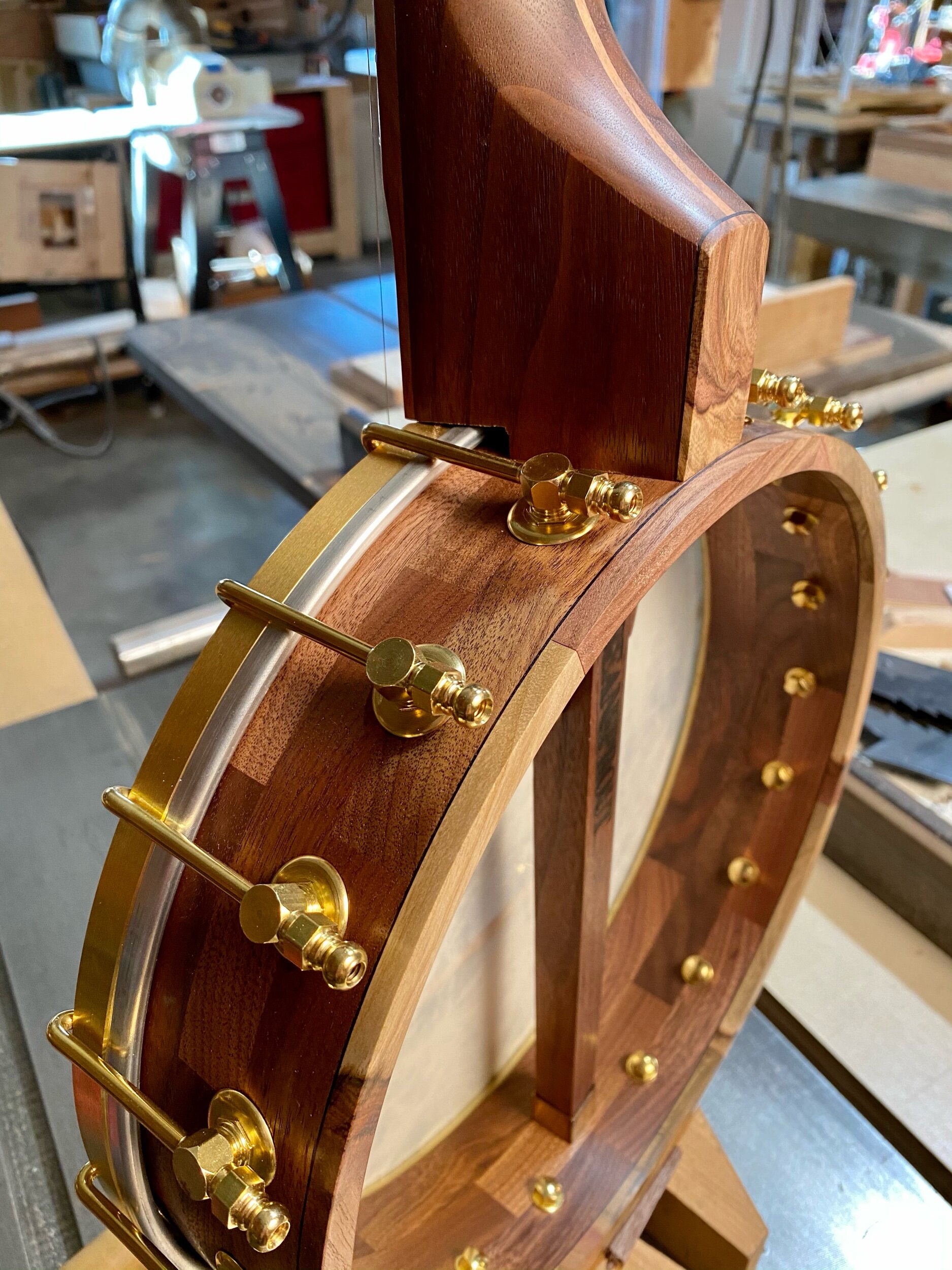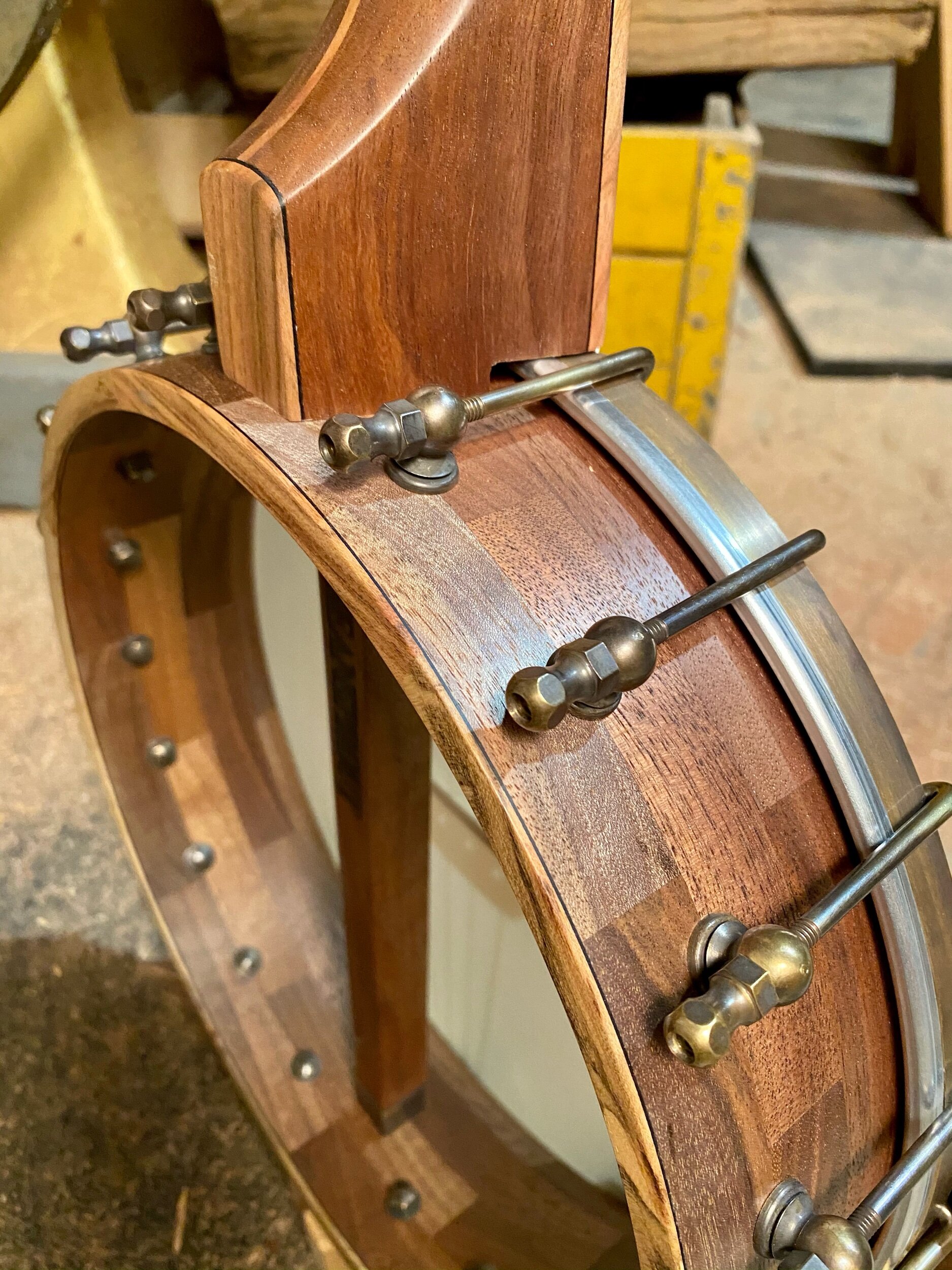Learning a new skill is a transformative experience. The growth and knowledge that comes from trying something new is a major part of a crafts person’s journey. In this case, my new skills were also transformative to my materials, changing their look or function. First of all, I have been learning how to make my own brass tension hoops and tone rings. This means rolling, soldering, grinding, notching and polishing. I don’t mind if they look handmade, but they can’t be sloppy and need to be strong.
Second, I needed to learn how to darken the brass parts using an acid solution to create a different patina. Pretty easy and I like the look.
Third, my son and I made a natural stain/dye from the walnut shells in our yard, a common practice in folk art tradition. I used it to stain the goat skin head.
Lastly, I’ve been meaning to try a thin laminated rim with a brass tone ring instead of my normal block rim. Sound wise, I think this makes for a brighter, more traditional banjo uke sound. A little less sustain and a more percussive edge. I stained the rim and bridge black and used black laminates and accents on the cherry and pistachio neck to tie it all together. I think I’ll keep this one, but drop me a line if you want something similar.






